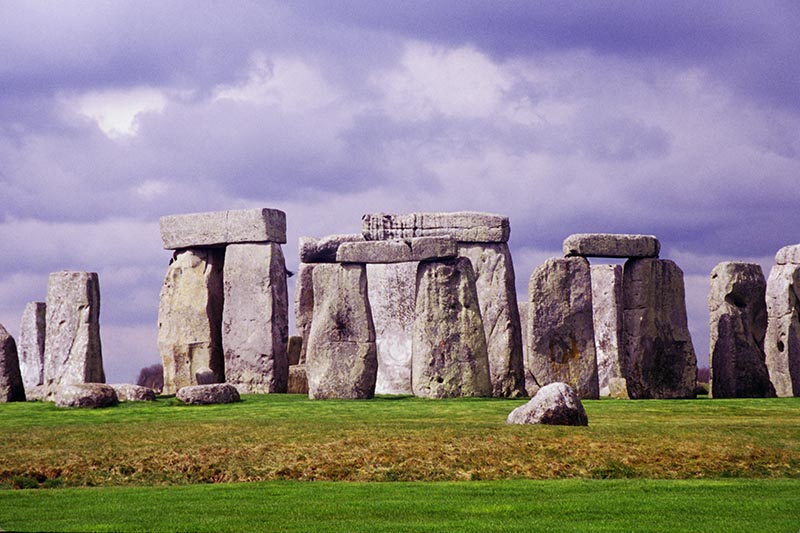 Stonehenge, constructed between 3100-2000 BCE on England's Salisbury Plain, may have been a Stoneage astronomical site (observatory is too strong a word), at least in part. Certainly the alignment of the "heelstone" with the rising Sun on Midsummer's Day (June 21, the Summer Solstice) represents a true astronomical alignment, and many other Megalithic sites have similar alignments. In Stonehenge Decoded, astronomer Gerald Hawkins argued that there exist a large number of astronomical alignments, though further study suggests that many of these are fortuitous.
Stonehenge, constructed between 3100-2000 BCE on England's Salisbury Plain, may have been a Stoneage astronomical site (observatory is too strong a word), at least in part. Certainly the alignment of the "heelstone" with the rising Sun on Midsummer's Day (June 21, the Summer Solstice) represents a true astronomical alignment, and many other Megalithic sites have similar alignments. In Stonehenge Decoded, astronomer Gerald Hawkins argued that there exist a large number of astronomical alignments, though further study suggests that many of these are fortuitous. - Recording Sun's movements
Even though the precise significance of the standing stones at Stonehenge remains the subject of debate, it is clear from the arrangement of the stones that were erected by pre-historic people specifically to record certain celestial events, such as the summer and winter solstices and the spring and autumnal equinoxes. Although Stonehenge is the best known of the ancient megalithic monuments (those made of stone in pre-historic times), the sheer number of similar sites throughout the world underlines how many pre-historic people placed an enormous importance on recording the motions of the Sun and the Moon.
- Parts of the Stonehenge
As seen in the above diagram, there is an avenue leading to the centre of the Stonehenge. Along the avenue, there is also heel stone which marks the original approach to the Stonehenge. After passing the heel stones, you will see slaughter stone which actually forms a ceremonial doorway for the Stonehenge. Around the Stonehenge, there are also some station stones with aubrey holes which are round pits that were part of the earliest structure. In addition, there is a barrow in it and a circle of Sarsen stones with lintels in the centre of the Stonehenge. In the circle, there is an altar stone which is found in the middle of it.
References:



0 comments:
Post a Comment